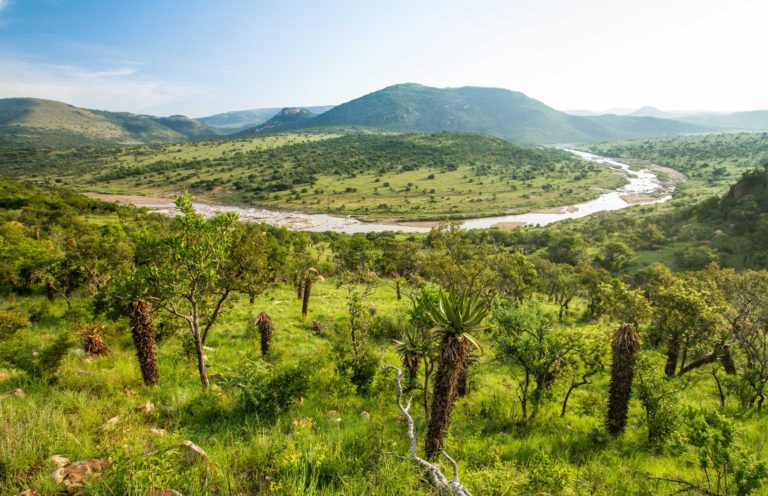If you’re an avid fan of the environment and would like to find out more about the aloes on Babanango Game Reserve, join renowned Durban horticulturalist Christopher Dalzell who will be leading an aloe tour on the reserve from 1 – 4 July 2021.
The beautiful rolling hills and plunging valleys of Babanango Game Reserve are home to some amazing endemic and endangered species of both fauna and flora, but when it comes to show-stopping rarities, it doesn’t get much better than the only known viable populations of two of South African most treasured aloes.

Aloe gerstneri and Aloe vanrooyenii are the species in question and both can be found in small but healthy numbers on Babanango and virtually nowhere else. Indeed, Aloe gerstneri is listed as vulnerable only occurs in seven known locations in a small, approximately 110km2 area of northern KwaZulu-Natal that includes most of Babanango Game Reserve.
During the 1960s and 1970s, this aloe was used extensively for ornamental purposes which lead to a dramatic decline in wild populations. However, over the last decade protection of Aloe gerstneri has led to a stabilisation of the remaining free-ranging plants. It’s range is severely restricted to the Babanango region, so it’s entirely likely that the rocky outcrops, grassy slopes, stream and riverbanks of Babanango Game Reserve will be the last remaining home of this wonderful species.
Aloe vanrooyenii is a recently described species of maculate aloe that flowers between October and November, making it the only early summer flowering species from KwaZulu-Natal. It is also found on Babanango and is considered critically endangered.
It’s also hoped that researchers will find specimens of the critically endangered Aloe nicholsii on Babanango, which would be understandable as its natural habitat of rocky grassland in the northern Zululand sourveld region fits Babanango perfectly and its discovery here on the reserve would undoubtedly bolster the reserve’s conservation efforts.
South Africa is home to 27% of the world’s approximately 630 species of aloe – more than any other country in the world. KwaZulu-Natal has 49 species that represent 29% of all aloe species in South Africa. Of these, almost another 29% are endemic to the province and a further 11 species (22%) are near-endemic.
To find out more details about this exciting tour, get in touch with Babanango Game Reserve reservations on [email protected] or call +27 31 100 0362.
Picture: Babanango Game Reserve
















